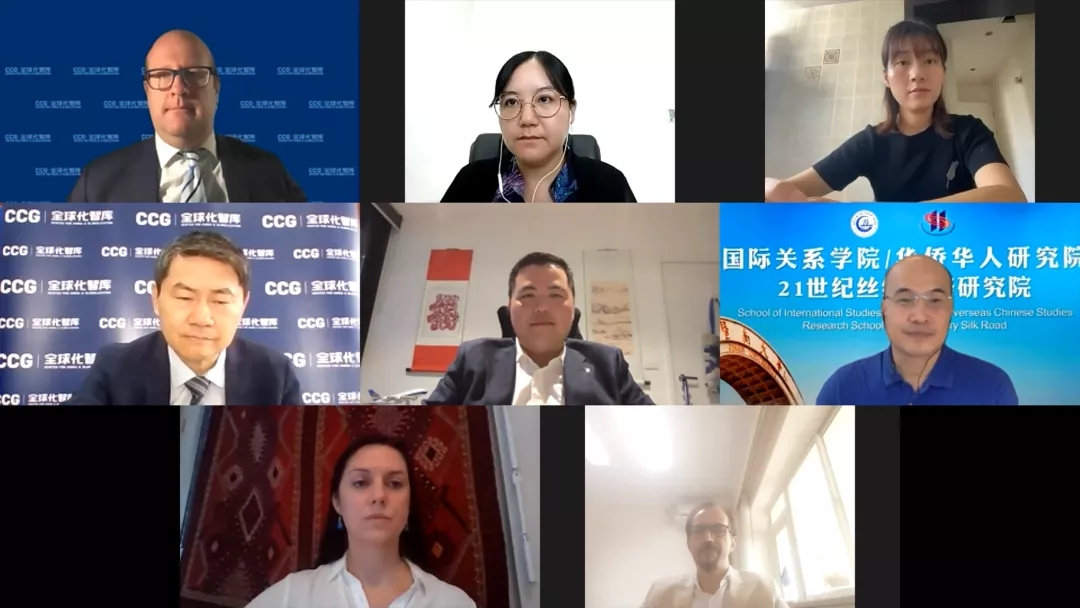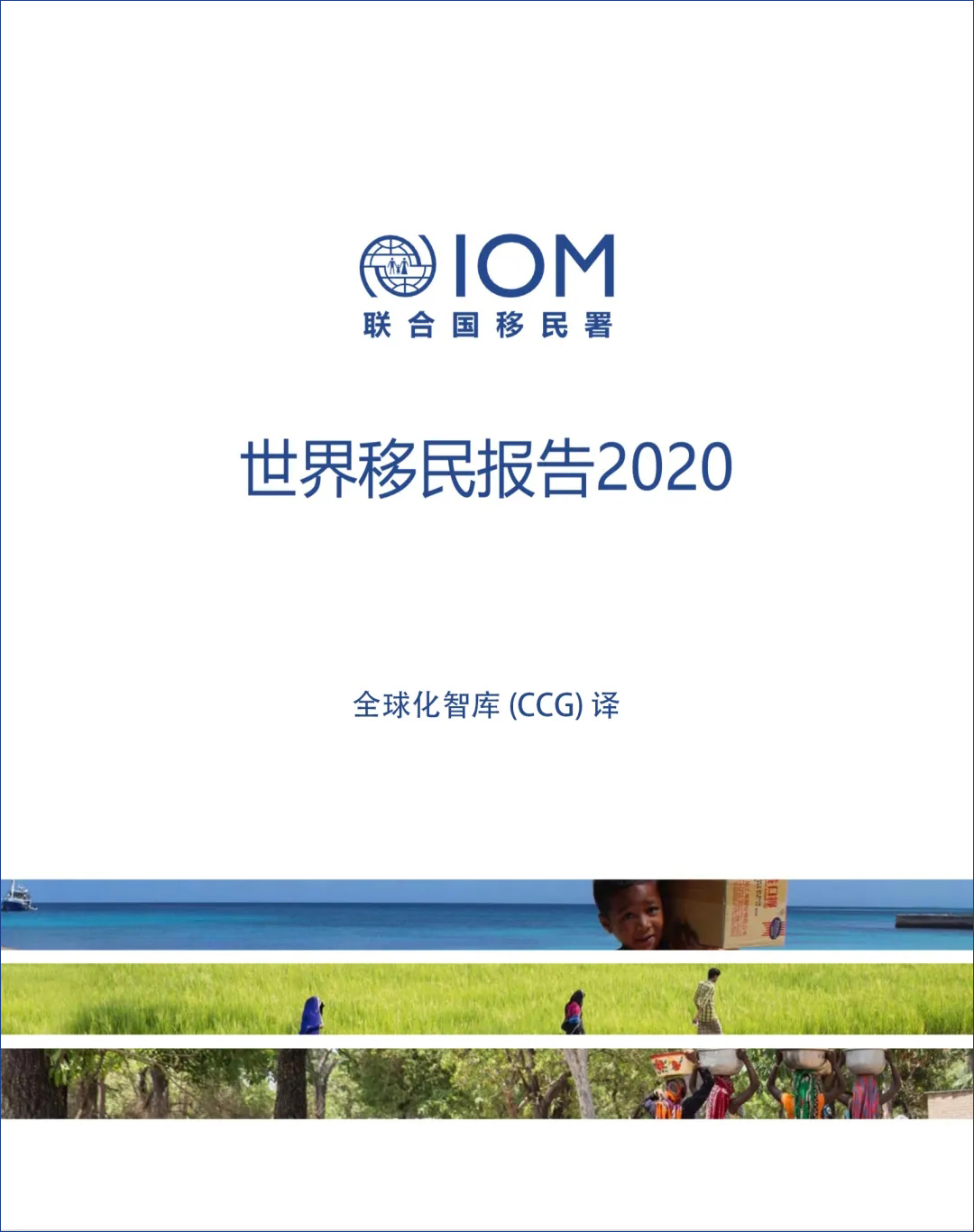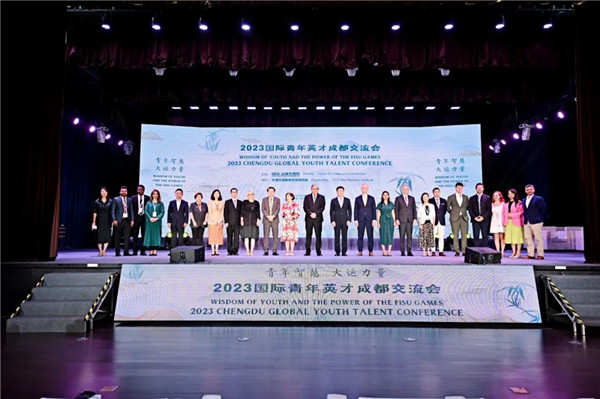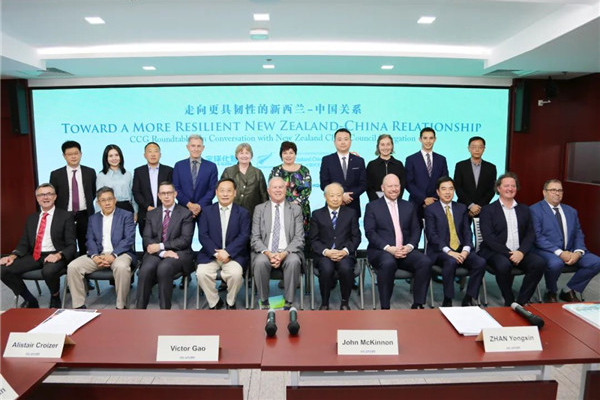CCG releases Chinese edition of World Immigration Report 2020

On August 25, 2020, the Center for China and Globalization (CCG) and the International Organization of Migration (IOM) jointly held an online publication ceremony for the World Migration Report 2020 and a seminar on related migration issues. The event brought together a group of leading experts in relevant fields to share their thoughts and insights on related issues. CCG translated the World Immigration Report 2020 into Chinese. This is the fourth time CCG and IOM have worked together on the Chinese edition of one of the most influential reports in the field of international migration.

The world migration report focuses on developments in migration over the last two-year period, with an emphasis on providing analysis that takes into account historical and contemporary factors. Historical in recognition that migration and displacement occur within broader long-term social, security, political and economic contexts. Contemporary in recognition that we are in the midst of profound global transformations, and that the resultant changes to our daily lives are impacting the current environment in which migration occurs and is discussed.
In late 2016, IOM made the decision to refine the World Migration Report series in order to ensure it was able to maximize its contribution to fact-based knowledge on migration globally. Each edition of the series now has two parts comprising: Part I: Key information on migration and migrants (including migration-related statistics); Part II: Balanced, evidence-based analysis of complex and emerging migration issues.
The guests participating in this seminar included CCG President Wang Huiyao, Guiseppe Crocetti, chief of mission of IOM in China, Marie McAuliffe, head of the Migration Policy Research Division at IOM, Lu Yixi, associate professor of the Institute of Development Studies at the Southwestern University of Finance and Economics, Lu Yixi, associate professor of the Institute of Development Studies at the Southwestern University of Finance and Economics, Zhang Yadi, senior research coordinator in the Global Mobility of Talent Project and Zhang Zhenjiang, professor of International Relations and dean of the School of International Studies/Academy of Overseas Chinese Studies at Jinan University, This seminar was hosted by Martin Geiger, associate professor of mobility and migration studies at Carleton University.
Highlights from Part I of the report on data and information on migration and migrants as well as highlights from Part II on complex and emerging migration issues are outlined below. Further information and discussion are provided in the report.
Highlights from Part I: Data and information on migration and migrants
The number of international migrants globally in 2019: 272 million (3.5% of the world’s population)
· 52 per cent of international migrants were male; 48 per cent were female.
· 74 per cent of all international migrants were of working age (20–64 years).
India continued to be the largest country of origin of international migrants
· India had the largest number of migrants living abroad (17.5 million), followed by Mexico and China (11.8 million and 10.7 million respectively).
· The top destination country remained the United States (50.7 million international migrants).
The number of migrant workers declined slightly in high income countries while increasing elsewhere
· Between 2013 and 2017, high-income countries experienced a slight drop in migrant workers (from 112.3 million to 111.2 million). Upper middle-income countries observed the biggest increase (from 17.5 million to 30.5 million).
· Globally, male migrant workers outnumbered female migrant workers by 28 million in 2017. There were 96 million male migrant workers (58%) and 68 million female migrant workers (42%).
International remittances increased to USD 689 billion in 2018
· The top 3 remittance recipients were India (USD 78.6 billion), China (USD 67.4 billion) and Mexico (USD 35.7 billion).
· The United States remained the top remittance-sending country (USD 68.0 billion) followed by the United Arab Emirates (USD 44.4 billion) and Saudi Arabia (USD 36.1 billion).
The global refugee population was 25.9 million in 2018
· 20.4 million refugees were under the mandate of the United Nations High Commissioner for Refugees (UNHCR) and 5.5 million were refugees under the mandate of the United Nations Relief and Works Agency for Palestine Refugees (UNRWA) in the Near East.
· 52 per cent of the global refugee population was under 18 years of age.
The number of internally displaced persons due to violence and conflict reached 41.3 million
· This was the highest number on record since the Internal Displacement Monitoring Centre began monitoring in 1998.
· The Syrian Arab Republic had the highest number of people displaced (6.1 million) followed by Colombia (5.8 million) and the Democratic Republic of the Congo (3.1 million).
The number of stateless persons globally in 2018 was 3.9 million
? Bangladesh had the largest number of stateless persons (around 906,000). It was followed by Co?te d’Ivoire (692,000) and Myanmar (620,000).
For further details, refer to chapter 2 of this report. Sources and dates of estimates above are outlined in the chapter.
Migration patterns vary from region to region
· While most international migrants born in Africa, Asia and Europe reside within their regions of birth, the majority of migrants from Latin America and the Caribbean and Northern America reside outside their regions of birth. In Oceania, the number of intraregional migrants and those residing outside the region remained about the same in 2019.
· More than half of all international migrants (141 million) lived in Europe and Northern America.
Migration has been a key determinant of population change in several countries
· Intraregional migration has been an important contributor to population change in some African countries such as Equatorial Guinea.
· Labour migration has contributed to significant population changes especially in Gulf Cooperation Council (GCC) States. With the exceptions of Oman and Saudi Arabia, migrants made up the majority of the populations in GCC countries.
Displacement remained a major feature in some regions
· The Syrian Arab Republic and Turkey were the origin and host of the largest number of refugees globally, 6.7 million and 3.7 million, respectively. Canada became the largest refugee resettlement country, resettling more refugees than the United States in 2018.
· The Philippines had the largest number of new disaster displacements in 2018 (3.8 million).
· Around 4 million Venezuelans had left their country by mid-2019. The Bolivarian Republic of Venezuela was the largest source country of asylum seekers in 2018 (over 340,000).
For further details, refer to chapter 3 of this report. Sources and dates of estimates above are outlined in the chapter.
Migration research and analysis output remained high
· There was a continued increase in the number of migration-related academic publications, with the largest ever academic output produced during the last two years. There was significant output from international organizations on a wide range of migration issues.
· Academic output on migration is dominated with perspectives from destination countries, especially in relation to Europe. A geographic comparison of the primary affiliations of authors in selected journals shows that most are from institutions in developed countries.
Highlights from Part II: Complex and emerging migration issues
· Migrants have made significant sociocultural, civic-political and economic contributions in origin and destination countries and communities, including by being important agents of change in a range of sectors (chapter 5).
· Immigrants tend to have higher entrepreneurial activity compared to natives. In countries such as the United States, migrants have disproportionately contributed to innovation (chapter 5).
· Migrants’ inclusion in the receiving society relates to diverse societal/policy areas that are closely interdependent. Inclusion outcomes in one policy area – such as language, education, labour market inclusion, family reunification, political participation and naturalization – will likely impact others (chapter 6).
· There is a dynamic and complex relationship between migration and health that extends well beyond crisis events. Migration can lead to greater exposure to health risks but it can also be linked to improved health, especially for those seeking safety from harm (chapter 7).
· While the majority of children who migrate do so through safe migration processes as part of family units, many other child migrants lack effective protection from harm and face human rights violations at all stages of their journeys (chapter 8).
· The most recent global estimate for the total number of child migrants is approximately 31 million. There are approximately 13 million child refugees, 936,000 asylum-seeking children, and 17 million children who have been forcibly displaced inside their own countries (chapter 8).
· There is increasing evidence that the magnitude and frequency of extreme weather events are rising, and this is expected to increasingly affect migration and other forms of movement. While human mobility resulting from environmental and climate change is often framed along protection and security lines, understanding mobility as adaptation allows for migrants’ agency to be part of the response equation (chapter 9).
· Migration status can significantly impact on migrants’ ability to deal with crisis. Flexible immigration and visa policies help make it possible for migrants to keep themselves safe as well as recover from the impact of a crisis. Return is one, but not necessarily the primary, response option (chapter 10).
· The last two years have seen substantial change in the global governance of migration, principally in the formation of the United Nations Network on Migration and the two global compacts on refugees and migration. Although they are not legally binding, the two global compacts represent a near-universal consensus on the issues requiring sustained international cooperation and commitment (chapter 11).
LocationBeijing





